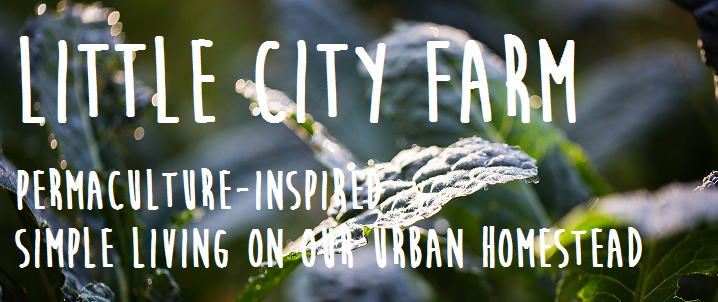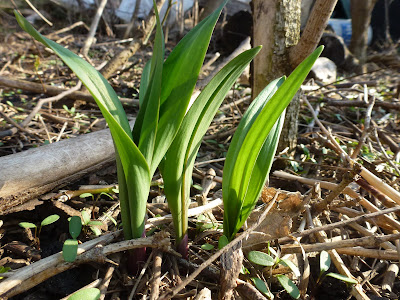We had a great workshop on building cob ovens here on Saturday. We are very inspired by cob (and other natural building in general - read the 10 reasons why natural building can address climate change here), but we think that cob ovens are the perfect place to start when you want to learn to build with natural materials like clay, sand and straw. Cob ovens take little time to go from start to finish, as an oven can be done in a few weekends time; building with cob requires only basic hand tools and no previous construction experience; cob ovens cost virtually nothing if you take time to source local and repurposed materials (cob ovens are often called "the $20 cob oven"); and cob ovens give you a wonderful finished project for baking beautiful breads and pizzas. We love Kiko Denzer's book, Build your own Earth Oven, as a great primer for building your own cob oven.
Here are a few photos of our workshop - participants did not build an oven as this was just an overview workshop about the process, however they did get to mix and handle cob (clay-sand-straw), and eat freshly baked pizza! Thanks to Natalie Nunn for the great photography from that day.
Thursday, April 20, 2017
Monday, April 17, 2017
Wild Violet Syrup Making - a spring ritual
Making violet syrup with wild flowers is our favourite spring ritual. We've been doing this for a few years now, usually in mid to end of April when the violets are in full bloom and ready to be picked. They are abundant, so there is no great worry about overharvesting, though care should still be taken when wildharvesting so that we leave enough to be enjoyed in another year.
Here is our recipe for Wild Violet Syrup! When it's made with sugar the syrup turns a bright light pink colour - but honey does not give it this colour (though the honey version is much healthier and also just as delicious). We serve our syrup with sparkling water as a refreshing floral spring tonic.
How to make Violet Syrup
You will need:
4 cups fresh violet flowers (not washed)
4 cups water that has just boiled
2-4 cups sugar (or honey)
8 Tbsp lemon juice
1) Place fresh violet flowers into a glass jar or measuring cup. Cover with water that has just boiled, and place a lid or plate on top. Steep this infusion for 24 hours (covered).
2) After 24 hours, strain the infusion. Compost flowers, reserve the infused water.
3) Put infusion into a stainless steel pot, add sugar and lemon and bring to a boil. Then turn down heat and simmer until sugar (or honey) is dissolved and syrup starts to thicken. Stir constantly until syrup coats the back of the wooden spoon. This can take from 15-30 min depending on how thick you want your syrup to be.
4) Bottle in glass jars, cap and store in the fridge. Keeps 3 months in fridge.
5) To use: add about 1/4 cup syrup to a glass, top with sparkling water and add fruit or ice cubes. This is a delicious sweet and refreshing tonic to lighten your heart and put a spring in your step.
Here is our recipe for Wild Violet Syrup! When it's made with sugar the syrup turns a bright light pink colour - but honey does not give it this colour (though the honey version is much healthier and also just as delicious). We serve our syrup with sparkling water as a refreshing floral spring tonic.
How to make Violet Syrup
You will need:
4 cups fresh violet flowers (not washed)
4 cups water that has just boiled
2-4 cups sugar (or honey)
8 Tbsp lemon juice
1) Place fresh violet flowers into a glass jar or measuring cup. Cover with water that has just boiled, and place a lid or plate on top. Steep this infusion for 24 hours (covered).
2) After 24 hours, strain the infusion. Compost flowers, reserve the infused water.
3) Put infusion into a stainless steel pot, add sugar and lemon and bring to a boil. Then turn down heat and simmer until sugar (or honey) is dissolved and syrup starts to thicken. Stir constantly until syrup coats the back of the wooden spoon. This can take from 15-30 min depending on how thick you want your syrup to be.
4) Bottle in glass jars, cap and store in the fridge. Keeps 3 months in fridge.
5) To use: add about 1/4 cup syrup to a glass, top with sparkling water and add fruit or ice cubes. This is a delicious sweet and refreshing tonic to lighten your heart and put a spring in your step.
Signs of spring
There are sure signs of spring popping up around the yard and garden all around us. Every year it's the same happy pattern - first the wild greens (the nettles, the dandelions, the wild garlic that we start nibbling on); then the wild violets that we pick for syrup and salads; then the other wild herbs & flowers that we've planted into our shade gardens (the trout lilies, the bloodroot, the wild ginger that have all been planted to create woodland areas in our yard); and then the rhubarb growing bigger by the minute! The sorrel leaves, the asparagus poking up, the chives, the mint patches, the lemon balm, the catnip, the yarrow...These are our favourite early days of spring, when it's all so hopeful and fresh, the flavours are new and exciting, vibrant and healthful for us again after our winter.
Sunday, April 09, 2017
Cob oven wood-fired baking
This past weekend we had our first spring-like days for April. We wanted to spend all our time outside soaking up the sun and doing all those spring yard and garden prepping projects: planting the grow tunnel, cleaning the hen yard, clearing mulch off garden beds. It was also the perfect opportunity for baking in the cob oven. (Cob is a building material made of = clay + sand + straw)
The cob oven is situated right beside our main garden, also next to a wood storage shed, and only a few steps from the kitchen - all important factors that were planned out when we designed the oven so that the fires are easy to tend, and baking is simple to do, while we can also work on other projects nearby. In the warmer months, we usually bake at least once a week - for sourdough breads and for pizza night. We've had our oven for 11 seasons now, and have learned a few things over the years about baking in a wood-fired oven. We know how long to fire up the oven before it's ready for baking, we know it burns best with small to medium pieces of hardwood but can do well with any manner of scrap wood (untreated) and twigs & branches from the yard, and we know where to position the baked goods so they bake evenly, we know how to avoid smoke in the face (most cob ovens don't have a chimney so they rely on convection to keep the smoke rising properly), and we know what we might have designed differently if we built another oven (more insulation material underneath to retain heat). We know that a shelter overtop of a cob oven is crucial for the oven to hold up over time - cob ovens don't fare well with rain and snow. We know how to patch the oven if it develops a crack (and it will). We know that cob is incredibly fun, forgiving, beautiful, timeless and very affordable to work with!
Want to learn more? Join our cob oven workshop this coming Saturday (only a few spots left), or look for future cob oven workshops this summer and fall. Or look for Kiko Denzer's book, Build your own Earth Oven. This is a great book to help answer all the questions about designing, building and firing a cob oven of your own.
And so it was the perfect weekend, with the most amazing pizza fresh from the cob oven - including a nettle pesto (use this favourite recipe and substitute nettles or other herbs for basil) with wild-harvested first spring nettles. Yum!
The cob oven is situated right beside our main garden, also next to a wood storage shed, and only a few steps from the kitchen - all important factors that were planned out when we designed the oven so that the fires are easy to tend, and baking is simple to do, while we can also work on other projects nearby. In the warmer months, we usually bake at least once a week - for sourdough breads and for pizza night. We've had our oven for 11 seasons now, and have learned a few things over the years about baking in a wood-fired oven. We know how long to fire up the oven before it's ready for baking, we know it burns best with small to medium pieces of hardwood but can do well with any manner of scrap wood (untreated) and twigs & branches from the yard, and we know where to position the baked goods so they bake evenly, we know how to avoid smoke in the face (most cob ovens don't have a chimney so they rely on convection to keep the smoke rising properly), and we know what we might have designed differently if we built another oven (more insulation material underneath to retain heat). We know that a shelter overtop of a cob oven is crucial for the oven to hold up over time - cob ovens don't fare well with rain and snow. We know how to patch the oven if it develops a crack (and it will). We know that cob is incredibly fun, forgiving, beautiful, timeless and very affordable to work with!
Want to learn more? Join our cob oven workshop this coming Saturday (only a few spots left), or look for future cob oven workshops this summer and fall. Or look for Kiko Denzer's book, Build your own Earth Oven. This is a great book to help answer all the questions about designing, building and firing a cob oven of your own.
And so it was the perfect weekend, with the most amazing pizza fresh from the cob oven - including a nettle pesto (use this favourite recipe and substitute nettles or other herbs for basil) with wild-harvested first spring nettles. Yum!
Subscribe to:
Posts (Atom)
































